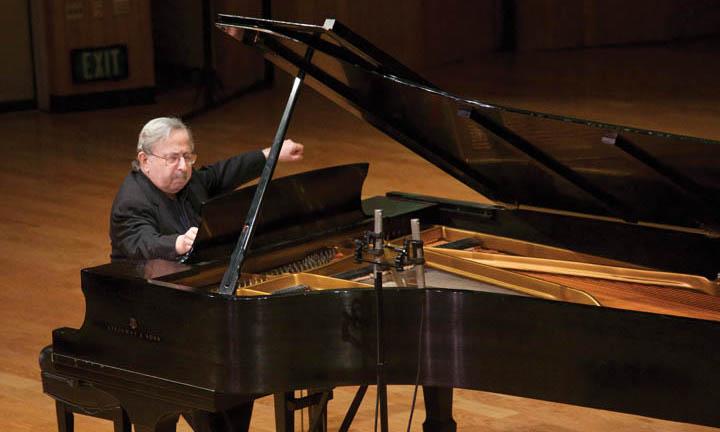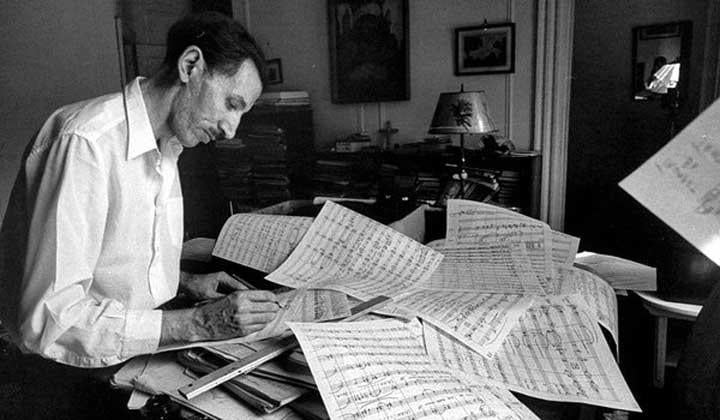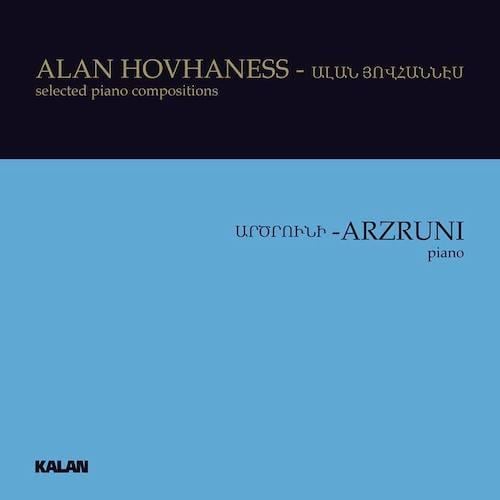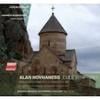
Alan Hovhaness (1911 – 2000) was a textbook case of an outsider in American music, going his own way exploring his Armenian heritage while picking up Eastern and Southern Asian influences and aleatoric (controlled chance) techniques. He steered clear of anything resembling fashion throughout most of his long composing life, but now, he can be grouped with Colin McPhee, Lou Harrison, and a few other mavericks as prophets of the infiltration of world music influences upon a Eurocentric art form.
Early in Hovhaness’s development, Roger Sessions criticized his music, and he endured ridicule at Tanglewood in the 1940s from Aaron Copland and Leonard Bernstein. (Bernstein eventually recanted, we’re told, but still never recorded any of Hovhaness’s music.) Nevertheless, Hovhaness persisted. Occasionally, an influential champion would emerge for a while — Leopold Stokowski first, then Howard Hanson, Fritz Reiner, Andre Kostelanetz, and, in Hovhaness’s final years, Gerard Schwarz. Yet with the possible exceptions of the Symphonies Nos. 2 (Mysterious Mountain) and 50 (Mount St. Helens), his music has not really penetrated the mainstream.

Although a great deal has been recorded, we may never know the full extent of Hovhaness’s legacy, what with over 500 surviving works, including 67 symphonies, to his name, a good deal of which has never been published. Yet a recent disc from a Hovhaness friend and disciple, pianist Şahan Arzruni, reveals a sliver of his unpublished output — a collection of several short pieces for piano from the 1940s and early ’50s. Some of the pieces have appeared before on disc, but most are world premiere recordings, packaged in a fancy glossy box on the Turkish Kalan Music label, with liner notes by Arzruni in English, Turkish, and Armenian. It was released two years ago, but not distributed in the U.S. until recently, when the behemoth Amazon got a hold of it and made it available here.

The suites that bookend this 73-minute collection — Invocations to Vahakn and Sonata Hakhpat — contain percussion parts, usually punctuation points or sustained tones on a variety of instruments, all handled by Adam Rosenblatt. The Invocations contain just a single line of piano operating in Middle Eastern scales in an almost improvisatory-sounding way. Hakhpat gives the piano more to do but works in pretty much the same way, frequently in unison octaves.
In between these pieces, it’s just Arzruni at the piano inflecting as much nuance and character as he can within sets of miniatures, suites, and mini-sonatas that often use a lot of repetition and can tire the musical palette when heard one after another. Breaking with possible monotony is a two-voice fugue that forms the finale to Yenovk, and Mystic Flute, which is supposed to reflect an Indian influence with its repeating two-note tala accompaniment in the left hand underneath an Armenian-flavored melody. Venturing toward Eastern Europe, the piano is turned into a virtual cimbalom in the rippling Lalezar, and there is use of different scales in a Suite on Greek Tunes. Laona appears to be the furthest departure as the use of broken chords, and seemingly aimless wandering replaces repetition.
The collection certainly is diverting, different, and easy to assimilate, but for someone making the first plunge into Hovhaness, a better idea would be to sample Schwarz’s discs of his alluring, mesmerizing, often serene, sometimes wild orchestral music on Delos, Naxos, or Telarc. Or better yet if you can find it, Kostelanetz’s great all-Hovhaness LP full of swirling aleatoric episodes, issued on Columbia in the 1970s but never transferred to CD in full (some of it is on YouTube).




